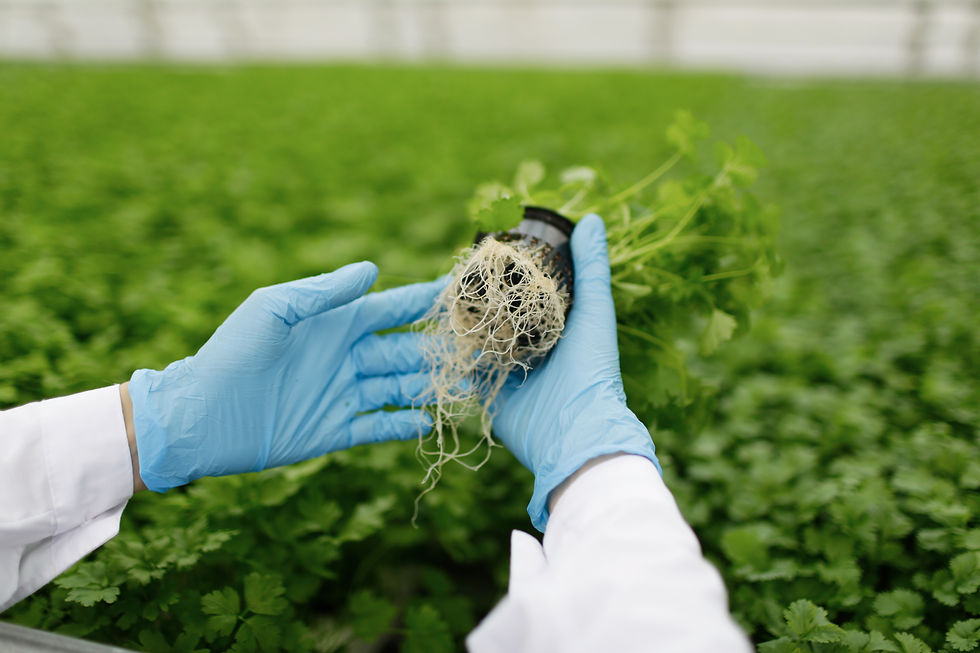Full Guide About Bradyrhizobium Japonicum as Fertilizer
- Emma Brown

- Dec 19, 2024
- 2 min read

When it comes to sustainable agriculture and boosting crop yields, Bradyrhizobium Japonicum plays a vital role. This unique soil bacterium is renowned for its ability to form symbiotic relationships with soybean plants, making it an invaluable biofertilizer in modern farming practices. Let’s dive into the details of how Bradyrhizobium Japonicum works, its benefits, and how it can be used effectively.
What is Bradyrhizobium Japonicum?
Bradyrhizobium Japonicum is a type of nitrogen-fixing bacterium. It lives in the soil and forms nodules on the roots of leguminous plants, particularly soybeans. These nodules serve as a site where the bacteria convert atmospheric nitrogen into ammonia, which is a usable form of nitrogen for plants. This natural process eliminates the need for synthetic nitrogen fertilizers, making farming more eco-friendly and cost-effective.
How Does It Work?
Root Infection: When soybean seeds are planted, Bradyrhizobium Japonicum attaches itself to the root hairs.
Nodule Formation: The bacteria stimulate the roots to form nodules, which act as tiny factories for nitrogen fixation.
Nitrogen Fixation: Within the nodules, the bacteria convert atmospheric nitrogen (N2) into ammonia (NH3) using a process called biological nitrogen fixation.
Nutrient Supply: The ammonia produced is absorbed by the plant, providing essential nitrogen for growth and development.
Benefits of Using Bradyrhizobium Japonicum
Improved Soil Fertility: By naturally enriching the soil with nitrogen, it enhances fertility for future crops.
Cost-Effective: Reduces the dependency on synthetic nitrogen fertilizers, saving costs for farmers.
Eco-Friendly: Minimizes chemical runoff into water bodies, promoting sustainable farming.
Increased Yield: Promotes healthier plants, leading to better crop quality and quantity.
Adaptability: Works in diverse soil conditions and climates, making it suitable for various regions.
How to Use Bradyrhizobium Japonicum as a Fertilizer?
Seed Inoculation: Coating soybean seeds with a Bradyrhizobium Japonicum-based inoculant before planting ensures effective nodulation.
Soil Application: Introducing the bacteria directly into the soil enhances its population and efficiency.
Compatibility Check: Ensure the strain is compatible with the soybean variety you’re cultivating.
Proper Storage: Store inoculants in cool, dry places to maintain their viability.
Why Farmers Prefer Bradyrhizobium Japonicum?
Farmers worldwide are shifting to Bradyrhizobium Japonicum due to its proven results in improving soybean yields. It not only boosts crop production but also contributes to sustainable farming practices. Additionally, with increasing awareness of environmental conservation, biofertilizers like Bradyrhizobium Japonicum are becoming a preferred choice.
Challenges and Solutions
Soil Conditions: Acidic or nutrient-deficient soils can limit bacterial activity. Using lime or organic matter can improve conditions.
Inoculant Viability: Expired or poorly stored inoculants may not work. Always check the manufacturing date and storage instructions.
Competition with Native Microbes: Native soil microbes might outcompete Bradyrhizobium Japonicum. Using higher doses or pre-tested strains can help.
Conclusion
Bradyrhizobium Japonicum is a game-changer for soybean farmers and sustainable agriculture. Its ability to fix nitrogen naturally, reduce costs, and improve soil health makes it an essential tool for modern farming. By using it effectively, farmers can achieve higher yields while preserving the environment. Adopting Bradyrhizobium Japonicum as a biofertilizer is a step toward a greener, more productive future.




Comments